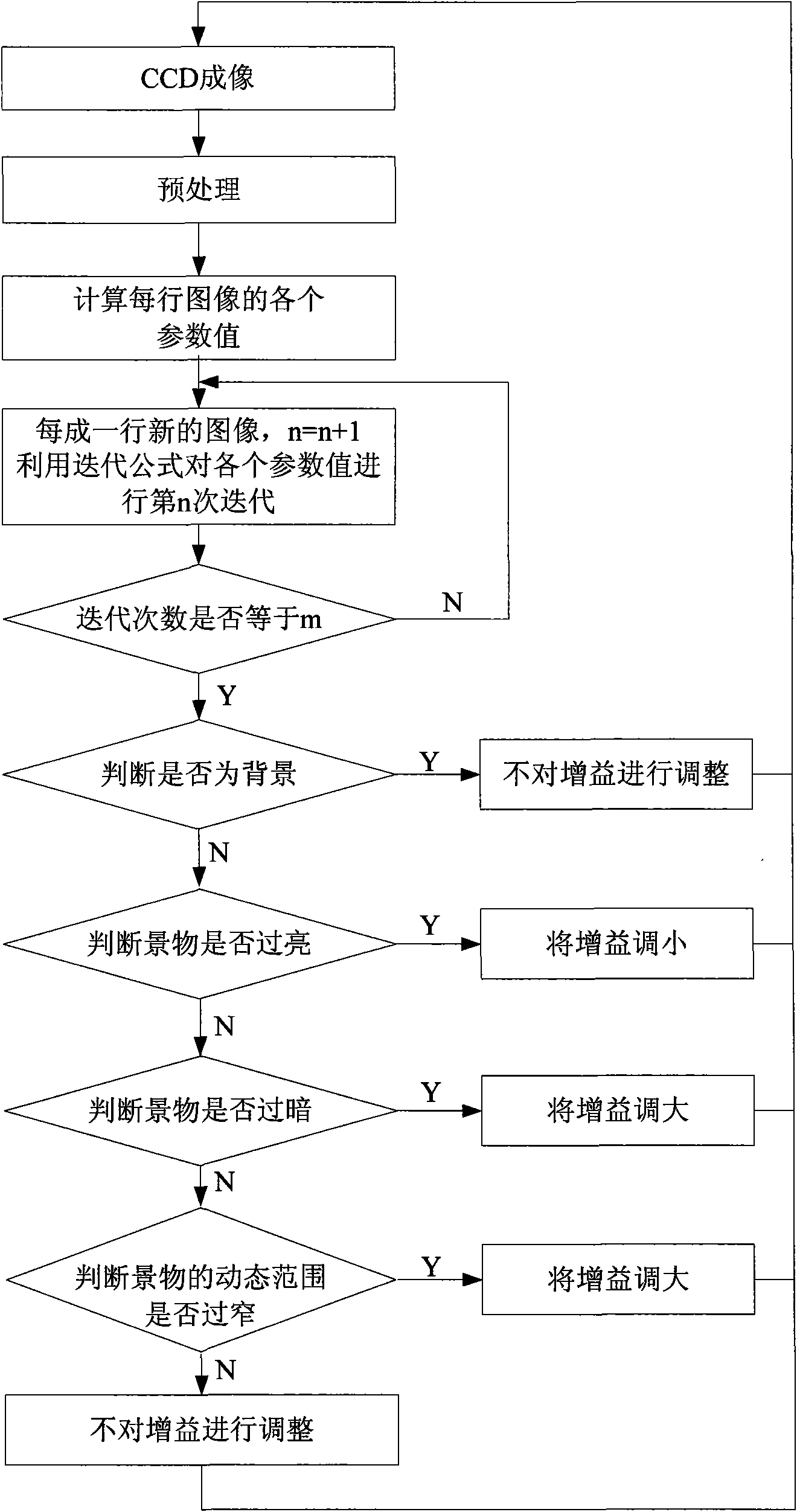Self-adapting real-time regulating method for linear array remote sensing CCD camera dynamic range
A dynamic range and real-time adjustment technology, which is applied to TV, color TV parts, electrical components, etc., can solve the problems of adjusting dynamic range and a large number of stripes in images, and achieves the effect of ensuring accuracy, simple method, and improving exposure time
- Summary
- Abstract
- Description
- Claims
- Application Information
AI Technical Summary
Problems solved by technology
Method used
Image
Examples
Embodiment Construction
[0028] Such as figure 1 As shown, the steps of the linear array remote sensing CCD camera dynamic range adaptive real-time adjustment method of the present invention are as follows:
[0029] 1. Receive image data line by line from the linear array remote sensing CCD camera, and remove noise points contained in each line of image data.
[0030] Various noises will be generated during the CCD imaging process, mainly including fixed pattern noise, random noise, shot noise, readout noise, etc. Usually, the signal-to-noise ratio of the system is about 48dB, and the noise of the system (including random noise, shot noise, Readout noise, etc.) is about 1 DN value (8-bit quantization), and the fixed pattern noise of CCD is generally less than 3%. According to the fixed pattern noise calculation formula:
[0031] PRNU = Pixel max - Pixel min ...
PUM
 Login to View More
Login to View More Abstract
Description
Claims
Application Information
 Login to View More
Login to View More - R&D
- Intellectual Property
- Life Sciences
- Materials
- Tech Scout
- Unparalleled Data Quality
- Higher Quality Content
- 60% Fewer Hallucinations
Browse by: Latest US Patents, China's latest patents, Technical Efficacy Thesaurus, Application Domain, Technology Topic, Popular Technical Reports.
© 2025 PatSnap. All rights reserved.Legal|Privacy policy|Modern Slavery Act Transparency Statement|Sitemap|About US| Contact US: help@patsnap.com



